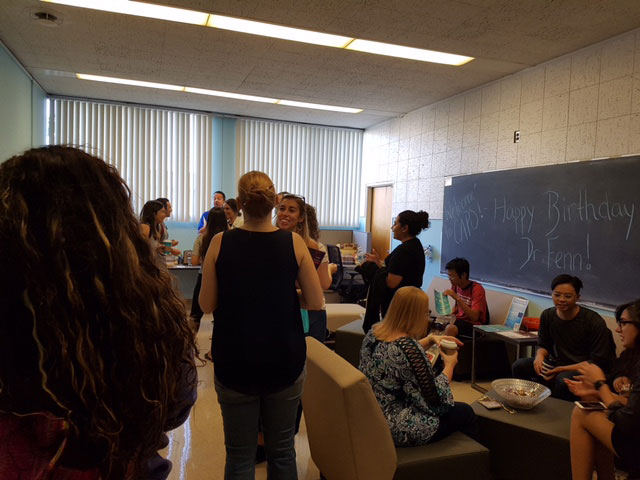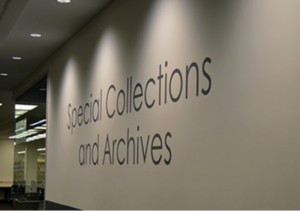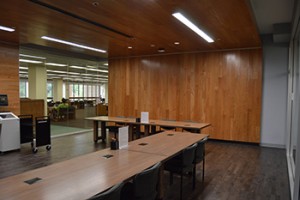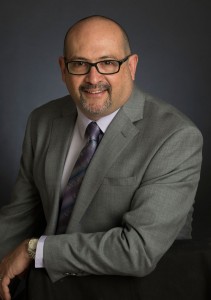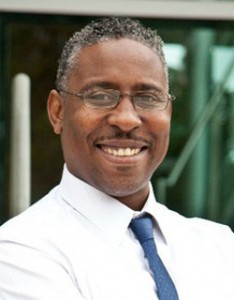
California’s highest-ranking female elected state official visited the California State University, Northridge campus Oct. 18, taking the opportunity to visit with students and CSUN President Dianne F. Harrison, and learn more about the university’s programs. David Nazarian College of Business and Economics faculty and students had a rare opportunity to meet and engage in a candid discussion with state Controller Betty Yee.
Based in Sacramento, Yee made an early-morning stop at CSUN, organized by the university’s Office of Government and Community Relations. After spending more than an hour chatting with about a dozen CSUN students, Yee said she was impressed and invigorated by the grit, tenacity and community-service mindset of the Matadors. Many of them spoke with her about college affordability, as well as the importance of internships and volunteerism.
“I am so inspired,” said Yee, who is serving her first four-year term as the state’s chief fiscal officer. “I knew about CSUN and have had interaction with the campus in the past. But it’s really impressed me as a campus that’s very engaged with the community and committed to hands-on learning.”
After the session with students, faculty and administrators, Yee met privately with President Harrison and Director of Government and Community Relations Francesca Vega and toured the campus.
Yee was elected to the office of controller in 2014 after serving two elected terms on the California Board of Equalization, from 2004-15. In addition to fielding questions, Yee encouraged the students — some of whom are studying political science and finance — to consider careers in the public sector. Former Los Angeles City Controller and City Councilmember Wendy Greuel, a friend of Yee’s and currently executive-in-residence and a strategic advisor in the Nazarian College, told the undergraduates: “[Yee] is the highest-ranking woman in statewide office.”
“I don’t want to be the last one!” Yee quipped. “We need to find more and elect more women. I found out I’m only the 10th woman elected to statewide office in our statehood.”
She also pointed out that 2018 is a gubernatorial election year for California — as well as for all statewide offices, including hers — and that the state will have a new governor, with Gov. Jerry Brown declining to run for another term.
“I hope you’re all paying attention,” Yee told the students. “The election of a new governor is an exciting time to hit ‘reset’ for our state.”
In addition to Greuel, several Nazarian College administrators and faculty joined the session with Yee, including Deborah Cours, interim dean; Robert Sheridan, managing director of career education and professional development; John Zhou, chair of the Department of Finance, Financial Planning and Insurance; Rafi Efrat, director of CSUN’s Volunteer Income Tax Assistance (VITA) Clinic and the Bookstein Low Income Taxpayer Clinic; Deborah Heisley, director of graduate programs in business and professor of marketing; and Vincent Covrig, professor of finance, financial planning and insurance.
Jonathan Goldenberg, Associated Students (AS) president, and Zahraa Khuraibet, AS vice president, also helped welcome the controller to campus.
“In the California State University system, we strive to keep college affordable for students,” Goldenberg told Yee during the Q&A session. “But it’s not just the tuition, it’s all the associated costs of going to college — books, food, housing. How do we, as an educational system and as a state, alleviate some of those stressors on students?”
Senior and political science major Adam LaBrie, a transfer student from Pasadena City College, told Yee that he thought CSUN staff and faculty stood out from other universities for their commitment to helping students pay for and complete college.
“In the process of applying, I noticed that CSUN was more willing to admit where there are shortcomings with college affordability — and they were able to point me toward the resources I needed,” said LaBrie, now serving as AS chair of legislative affairs.
“I did the D.C. Internship Program this past semester. There was all this knowledge my professors were willing to pass down” about financial aid, he continued. “This university helps us learn how to go out and find the resources we need.”
Yee shared her own background with the CSUN students, explaining that she, too, was a first-generation college student who depended on California’s public education system.
“I’m the daughter of Chinese immigrants and went to public school in San Francisco,” said Yee, who went on to earn a bachelor’s degree in sociology from the University of California, Berkeley. “My parents, I don’t know how they did it, but they scraped by, and we all got scholarships to go to school. It’s one of the things that makes our country so great.”
Greuel added that when she speaks with the heads of the region’s largest accounting firms, they praise their CSUN alumni employees, who share that type of “bootstraps” background.
“The CSUN students they have hired are their best employees,” Greuel said. “Not only because they have perseverance and grit, but because of the real-life internships and experiences they got. They got the best education.”













